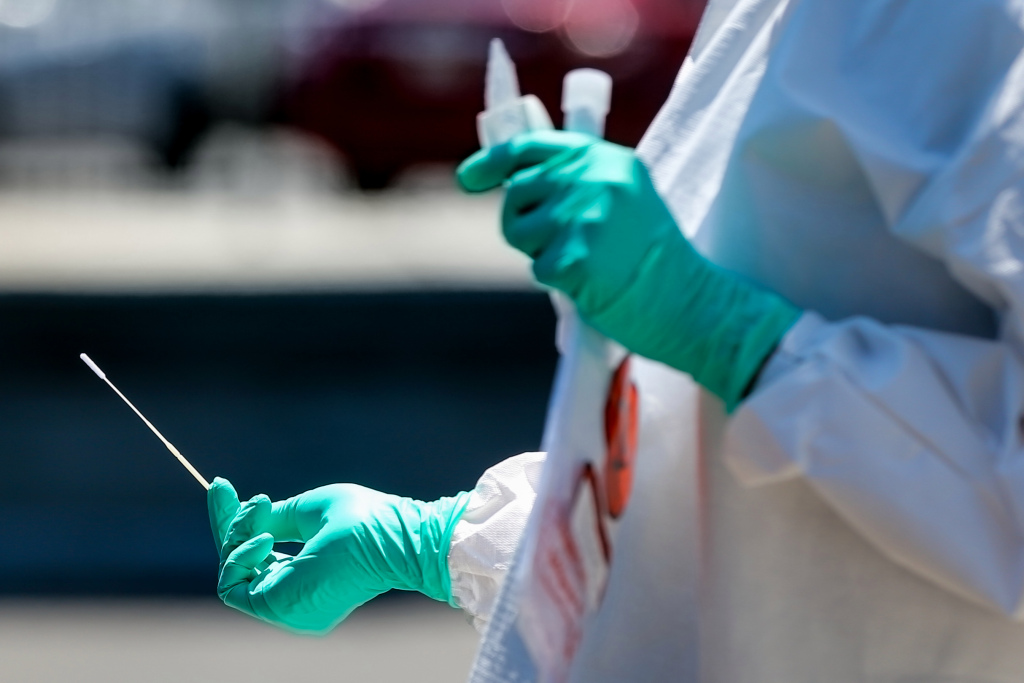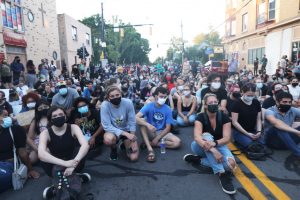An early leader in battling COVID-19, the Bay Area this week logged the region’s highest number of deaths in a single day, driven by Alameda County, which has reported 38 deaths in the past two days.
California has been battling a summer wave of cases and deaths that started after state officials began easing lockdown restrictions in June, with infections and deaths peaking in July and August in much of the state and rising sharply in Southern California and the Central Valley.
More recently, the tide has seemed to be turning, with the seven-day average of new cases in Southern California down 64 percent from its mid-July peak. But the Bay Area, which has far fewer cases overall, has yet to decline as rapidly: The region is down 43 percent from its mid-August peak.
Hospitalizations in the Bay Area are down about 30 percent from their peak compared to parts of Southern California and the Central Valley, which have cut their rates in about half.
Orange County, one of the hardest hit in the state, had fewer patients hospitalized with COVID-19 on Wednesday than it did in late May. But in Alameda County, which has more cases and deaths than any county in the Bay Area, hospitalizations on Wednesday were 55 percent higher than they were on June 1.
Still, the Bay Area has had a fraction of the hospitalizations that Southern California has seen — both in raw numbers and per capita measurements — and on Wednesday the Bay Area as a whole had fewer than half the hospitalizations of Los Angeles County.
But with Labor Day coming and additional business re-openings in Alameda County announced Thursday, the Bay Area is at a “delicate threshold,” said Kirsten Bibbins-Domingo, chair of the Department of Epidemiology and Biostatistics at UC San Francisco.
“If we just focus on the Bay Area, we’re sort of at the downslope of the second wave,” she said. “It’s not the time to be complacent about any of this because we’re still at a case rate that’s much higher than it was before this current wave.”
The most concerning sign is death rates, the statistic that tends to be the last to rise when infection spreads and the last to decline when new cases ebb.
Alameda County reported 17 new COVID-19 deaths Wednesday, the most in any single day during the pandemic. That record was broken Thursday, with 21 new deaths reported, for a total of 295 since the pandemic began, according to data compiled by this news organization.
The entire nine-county region, plus Santa Cruz County, recorded 27 deaths on Wednesday, eclipsing a previous high of 21 on April 22. Not all counties had reported their Thursday totals by early evening.
Many of the new cases and deaths have been concentrated in the heavily Black and Latinx neighborhoods of East Oakland, where three ZIP codes that include Fruitvale, the Coliseum and the Oakland International Airport down to the San Leandro border all have at least 355 cases per 10,000 residents, more than twice the rate of anywhere else in the county.
Those areas also have the highest test-positivity rates in the county, reaching as high as 16.9 percent compared to a statewide rate of 4.9 percent.
Alameda County — like the state as a whole — has struggled to deploy sufficient testing in hotspots with a quick enough turnaround time to detect and prevent outbreaks, Bibbins-Domingo said, calling that “the Achilles’ heel of all of California.” Alameda County in particular needs to ramp up testing in communities such as Fruitvale, she said.
Some of that is happening. UCSF and community organizations including The Unity Council and La Clinica de la Raza are launching an effort to test some 4,000 residents in one Fruitvale census tract later this month to better understand how the virus has spread through the community.
That effort mirrors a campaign that tested nearly 3,000 residents in San Francisco’s Mission District and found Latinx people made up 95 percent of positive cases but just 44 percent of those tested.
Dr. Noha Aboelata, CEO of the Roots Community Health Center in East Oakland, said the county has reacted more slowly than she would like instituting programs such as multilingual contact tracing and hasn’t tailored guidance around openings and safe activities to its hardest-hit communities.
“Decisions that get made based on Alameda County are not necessarily going to be applicable to Oakland, let’s say, or Hayward or Ashland, Cherryland, where the infection rates are much higher,” she said.
Lifting lockdown restrictions could put more essential workers at risk, experts said. On Thursday, the county public health department announced that indoor salons and barbershops would be allowed to reopen Friday, as well as indoor malls at 25 percent capacity.
Both the county and the Bay Area have a high concentration of essential workers and Black and Latinx residents in crowded housing, which makes them among the most likely to be infected. But so do many Southern California counties, said Dr. John Swartzberg, an infectious disease expert at UC Berkeley.
Instead, Swartzberg said the Bay Area trends might be lagging its Southern California counterparts in part because things never got as bad here. At its peak, Orange County had 22.7 patients hospitalized for COVID-19 for every 100,000 residents. It’s brought that down to 8.5 patients per 100,000.
Alameda County’s hospitalizations, however, peaked at 12.8 per 100,000 residents, and are now at 9 per 100,000.
Five Southern California counties have about 60 percent of all cases in the state. The Bay Area accounts for just 12 percent of the state’s cases.
“Southern California started at such a higher problem that any sort of intervention that took place would manifest itself more rapidly,” Swartzberg said.


















